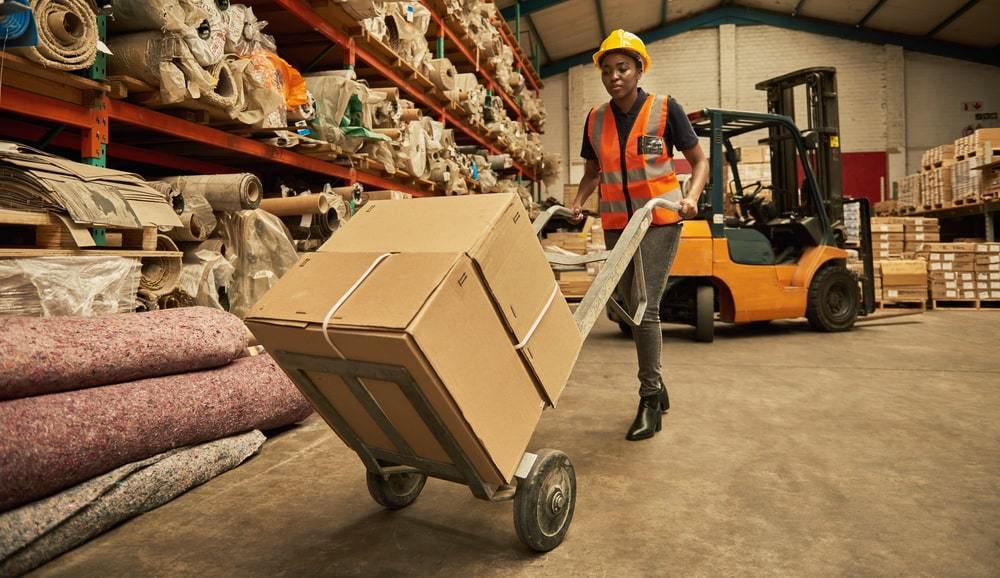Dollys can be the workhorse of your site if you use them correctly – they take the hard work out of a lot of laborious and heavy tasks and let you move heavy and awkward loads with relative ease. Follow our guide to make sure that you are using your dolly as safely as possible.
Loading
Manual handling injuries like strains, muscle pulls and twists are the bane of the industrial sector, causing lost productivity for the business and sometimes lasting harm to employees. Using a dolly is a great way of mitigating some of these issues – the dolly takes the bulk of the weight and the user can move larger quantities of goods or heavier loads with little risk to themselves.
However, it is important to load the dolly correctly. Make sure that everyone knows about, and follows, basic lifting guidelines when they load the industrial dolly, and that they don’t try to lift more than is comfortable.
If you feel it is necessary or would be of particular benefit, then use straps to secure your load to the dolly platform. It won’t prevent the whole unit from tipping over, but it will stop individual items from coming loose.
Always be sure to load your dolly with the heaviest items on the bottom. Even if you are using crates (and so items getting crushed is not an issue) keeping the centre of mass as low as possible means that you have better control and there is less chance of the stack tipping.
Moving
When you are moving your load around the site, make sure you have a clear view of where you are going – in particular the surface of the floor. A bump, transition between rooms or floor types, debris, rubbish and moisture can all cause issues when moving the dolly – issues that can escalate into losing control and shedding loads, which can be both expensive in terms of damaged goods and risky for the safety of the operator and other employees.
Be sure never to run with a loaded dolly, because your control diminishes with increased speed and it takes longer to stop. Collisions will become more likely, which can damage the load, the operator and whatever they crash into.
Best practice is to always push your dolly. You have greater control over it this way, and if you do somehow lose control the unit won’t crash into you. Make sure your dolly is not loaded too high, as visibility will be severely impaired; you want it to be at your neck or chin height at the most so you can easily see over it.
When it comes to junctions or corners, make sure to announce yourself audibly rather than just sailing out – always assume that there is another dolly coming to meet you on the blind side and take the necessary steps to ensure that anyone around you knows you are there.
